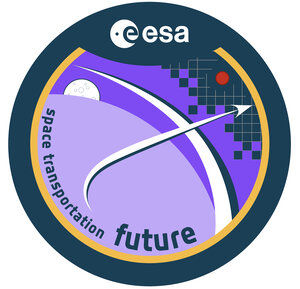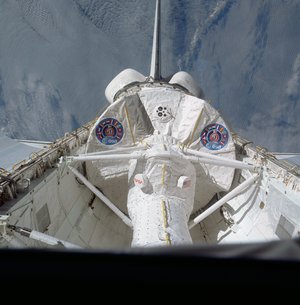Spacelab LMS-1
STS-78 was the fifth dedicated Life and Microgravity Spacelab mission for the Space Shuttle program, flown partly in preparation for the International Space Station project.
The mission used the Space Shuttle Columbia, which lifted off successfully from Kennedy Space Centre's launch pad 39-B on the 20 June 1996.
Mission objectives
- Research into the effects of long - duration spaceflight on human physiology in preparation for flights on the International Space Station.
- Twenty-two life science and microgravity experiments using the Orbiter's pressurised Life and Microgravity Spacelab module (LM2).
- Tests into the use of the Orbiter's Reaction Control System jets to raise the altitude of orbiting satellites.
MISSION STATISTICS
Mission name: STS-78
Shuttle: Columbia
Number of crew members: 7
Launch:
20 June 1996, 10:49:00.0075 a.m. EDT (2:49 p.m. UTC)
Landing:
7 July 1996, 08:37.30 a.m. EDT, (12:37 p.m. UTC) KSC, Runway 33
Duration: 16 days, 21 hours, 48 minutes, 30 seconds
Number of orbits: 272
CREW
- Terence T. Henricks (4), Commander
- Kevin R. Kregel (2), Pilot
- Susan J. Helms (3), Flight Engineer
- Richard M. Linnehan, DVM (1), Mission Specialist
- Charles E. Brady, Jr., MD (1), Mission Specialist
- Jean-Jacques Favier, PhD (1), Payload Specialist - CNES
- Robert Brent Thirsk, MD (1), Payload Specialist - CSA
Backup crewmembers:
- Pedro Duque (0), Alternate Payload Specialist, ESA Spain
- Luca Urbani, MD (0), Alternate Payload Specialist - ASI
(1) number of spaceflights each crew member has completed, including this mission

MISSION HIGHLIGHTS
During the 16-day, 21-hour mission, the crew of Columbia assisted in the preparations for the International Space Station by studying the effects of long-duration spaceflight on the human body in readiness for ISS Expeditions, and also carried out experiments similar to those now being carried out on the orbital station.
Following launch, Columbia climbed to an altitude of 173 miles (278 km) with an orbital inclination of 39° to the Earth's equator to allow the seven-member flight crew to maintain the same sleep rhythms they were accustomed to on Earth and to reduce vibrations and directional forces that could have affected on-board microgravity experiments.
Once in orbit, the crew entered the 40 foot (13 m) long pressurised Spacelab module to commence over 40 science experiments to take place during the mission. Not only did these experiments make use of the module’s laboratory, but also employed lockers in the middeck section of the Columbia Orbiter herself. Thirteen of the experiments were dedicated to studying the effects of microgravity on the human body, whilst another six studied the behaviour of fluids and metals in the almost weightless environment and the production of metallic alloys and protein crystals. The crew also carried out the first ever comprehensive study of sleep patterns in microgravity, research into bone & muscle loss in space, and in-flight fixes to problem hardware on the Bubble, Drop and Particle Unit (BDPU), designed to study fluid physics.
The mission also featured a test into the use of a procedure that was later used during the second Hubble Space Telescope servicing mission to raise the telescope’s altitude without damaging the satellite's solar arrays. During the test, Columbia's vernier Reaction Control System jets were gently pulsed to boost the Orbiter’s altitude without jarring any of the mission payloads. The test was entirely successful, and was later employed by Discovery during STS-82, and is also currently used to boost the orbit of the ISS during visits by Shuttles.
The mission encountered no significant in-flight problems, was the 78th Space Shuttle mission, and the 20th mission for Columbia.















 Germany
Germany
 Austria
Austria
 Belgium
Belgium
 Denmark
Denmark
 Spain
Spain
 Estonia
Estonia
 Finland
Finland
 France
France
 Greece
Greece
 Hungary
Hungary
 Ireland
Ireland
 Italy
Italy
 Luxembourg
Luxembourg
 Norway
Norway
 The Netherlands
The Netherlands
 Poland
Poland
 Portugal
Portugal
 Czechia
Czechia
 Romania
Romania
 United Kingdom
United Kingdom
 Slovenia
Slovenia
 Sweden
Sweden
 Switzerland
Switzerland
































